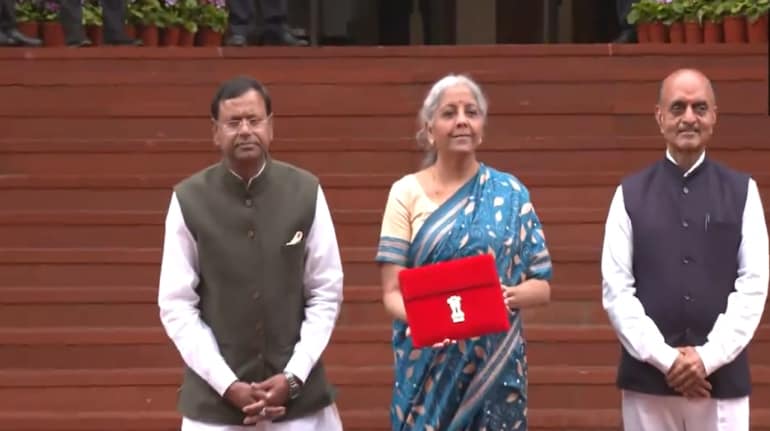The Monetary Policy Committee (MPC) of the Reserve Bank may keep the repo rate — its key lending rate — unchanged at 6.5 per cent in its upcoming monetary policy review scheduled from December 6-8.
This may be because of rising inflationary risks, stemming from the recent spike in vegetable prices. The central bank is also expected to retain the stance of the monetary policy as ‘withdrawal of accommodation’. With better-than-expected second-quarter gross domestic product (GDP) print at 7.6 per cent, the RBI may revise upwards its FY ’24 growth estimate.
Why will RBI keep the repo rate unchanged?
Economists said that the six-member rate-setting panel of the RBI is unlikely to tinker with the repo rate — the rate at which RBI lends money to banks to meet their short-term funding needs — in the upcoming policy.
“There will be no change (in the RBI policy). The reason is that the inflation will start inching up because food inflation is going to increase. We have seen onion and tomato prices going up again. So, there is no case for even thinking of lowering the repo rate. At the same time, core inflation is around 4 per cent, and therefore, there is no reason for the RBI to increase the rate,” said Madan Sabnavis chief economist, Bank of Baroda.
Consumer price-based inflation (CPI) eased to 4.87 per cent in October from 5.02 per cent in September. The retail inflation, however, remains above the 4 per cent target of the RBI.

Last month, RBI Governor Shaktikanata Das said that though headline inflation has moderated, it remains vulnerable to recurring and overlapping food price shocks coming from global factors and adverse weather events. In such a scenario, the monetary policy needs to remain watchful and actively disinflationary while supporting growth.
“We are completely focused on the 4 per cent target. We maintain Arjuna’s eye on the inflation target (of 4 percent),” he had said at a banking event.
Advertisement
According to Kaushik Das, chief economist, India & South Asia, Deutsche Bank, with the strong July-September 2023 GDP print and upside risks to near-term inflation prints due to food price volatility, RBI is likely to remain hawkish in the upcoming monetary policy.
“RBI will likely keep repo rate and stance unchanged, persist with tight liquidity and ensure that short-term rates remain around 6.85-6.90 per cent, resulting in an ‘effective rate hike’,” Das said.
This will be the fifth monetary policy on the trot when the MPC is likely to leave the repo rate unchanged at 6.5 per cent. Last time, the repo rate was raised from 6.25 per cent to 6.5 per cent in February 2023. Between May 2022 and February 2023, the policy rate was raised by 250 basis points (bps). One basis point is one-hundredth of a percentage point.
Advertisement
Will the RBI change the policy stance?
The stance of the monetary policy may be retained as the ‘withdrawal of accommodation’, analysts said.
“In the last policy, the RBI stated that the transmission of (250 bps hike in) the repo rate has not happened. If you look at the weighted average lending rates and deposit rates of banks, there is still a 50 bps in the lending rates. Therefore, the stance will continue to be ‘withdrawal of accommodation’,” Sabnavis said.
In response to the cumulative 250 bps hike in policy rate since May 2022, banks have revised their repo-linked external benchmark-based lending rates (EBLRs) upward by the same magnitude. The one-year median marginal cost of funds-based lending rate (MCLR) increased by 152 bps from May 2022 to October 2023. The weighted average lending rates (WALRs) on fresh and outstanding loans of banks increased by 187 bps and 111 bps, respectively, from May 2022 – September 2023.
On the deposit side, the weighted average domestic term deposit rates (WADTDRs) on fresh and outstanding rupee deposits increased by 229 bps and 166 bps, respectively.
Will the GDP and inflation projections be revised?
With the Q2FY’24 GDP growth overshooting its estimate of 6.5 per cent, the RBI may revise its FY2024 growth forecast marginally. The real GDP growth for FY’24 is projected at 6.5 per cent. The RBI may not revise the headline inflation forecast, which has been kept at 5.4 per cent for the current fiscal.
Advertisement
“RBI will likely increase FY’24 GDP forecast to 6.8 per cent y-o-y, from 6.5 per cent y-o-y earlier, while holding the FY’24 CPI forecast unchanged at 5.4 per cent (as food inflation will come off sharply in January-March 2024, after picking up in October-December 2023),” Deutsche Bank’s Das said.
What will happen to lending rates in case of a pause by RBI?
As the RBI is expected to keep the policy rate unchanged at 6.5 per cent, all external benchmark lending rates linked to the repo rate will not rise. It will provide some relief to borrowers as their equated monthly instalments (EMIs) will not increase.
RBI monetary policy: Why is the Monetary Policy Committee likely to leave repo rate unchanged? - The Indian Express
Read More

No comments:
Post a Comment